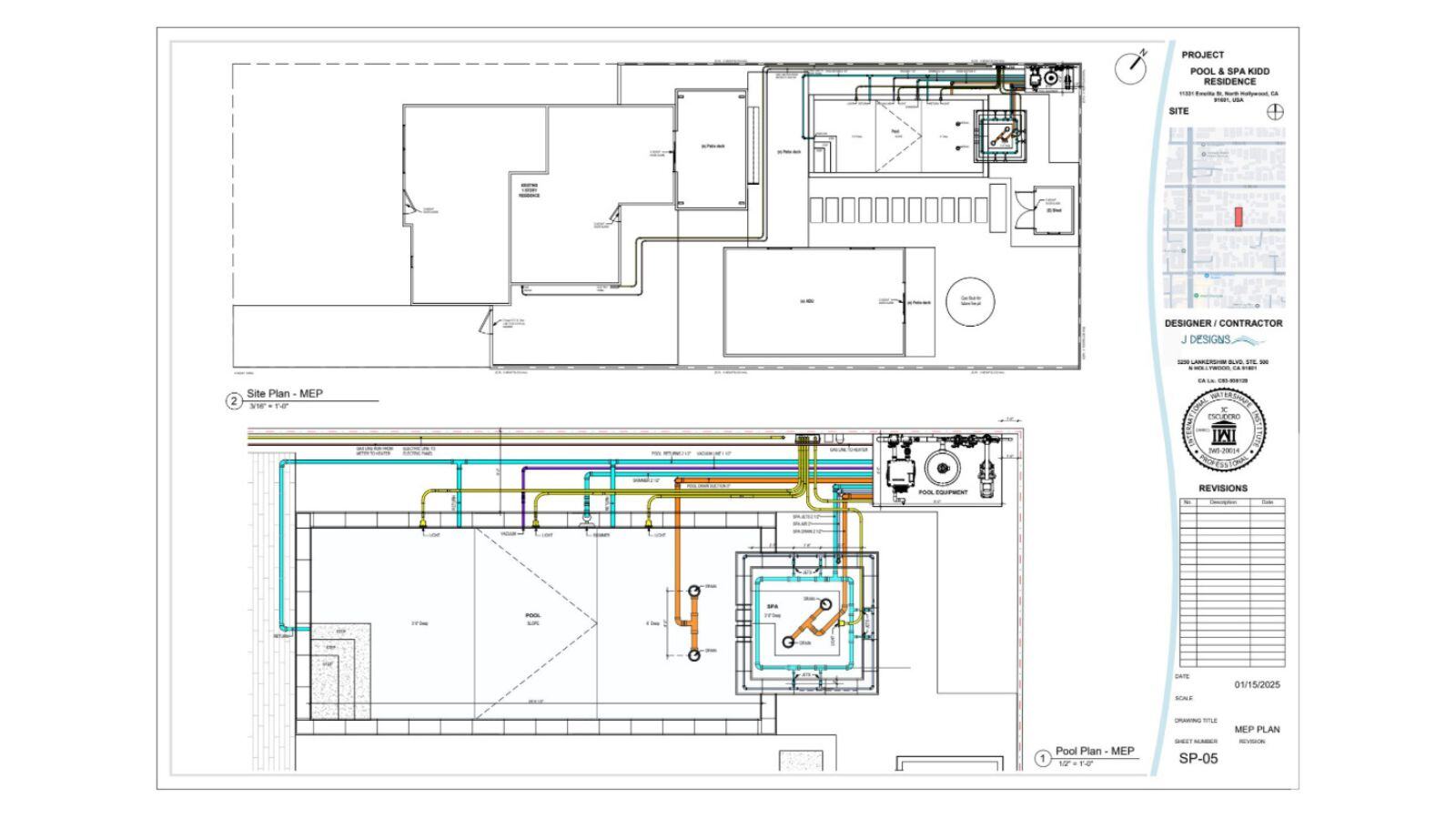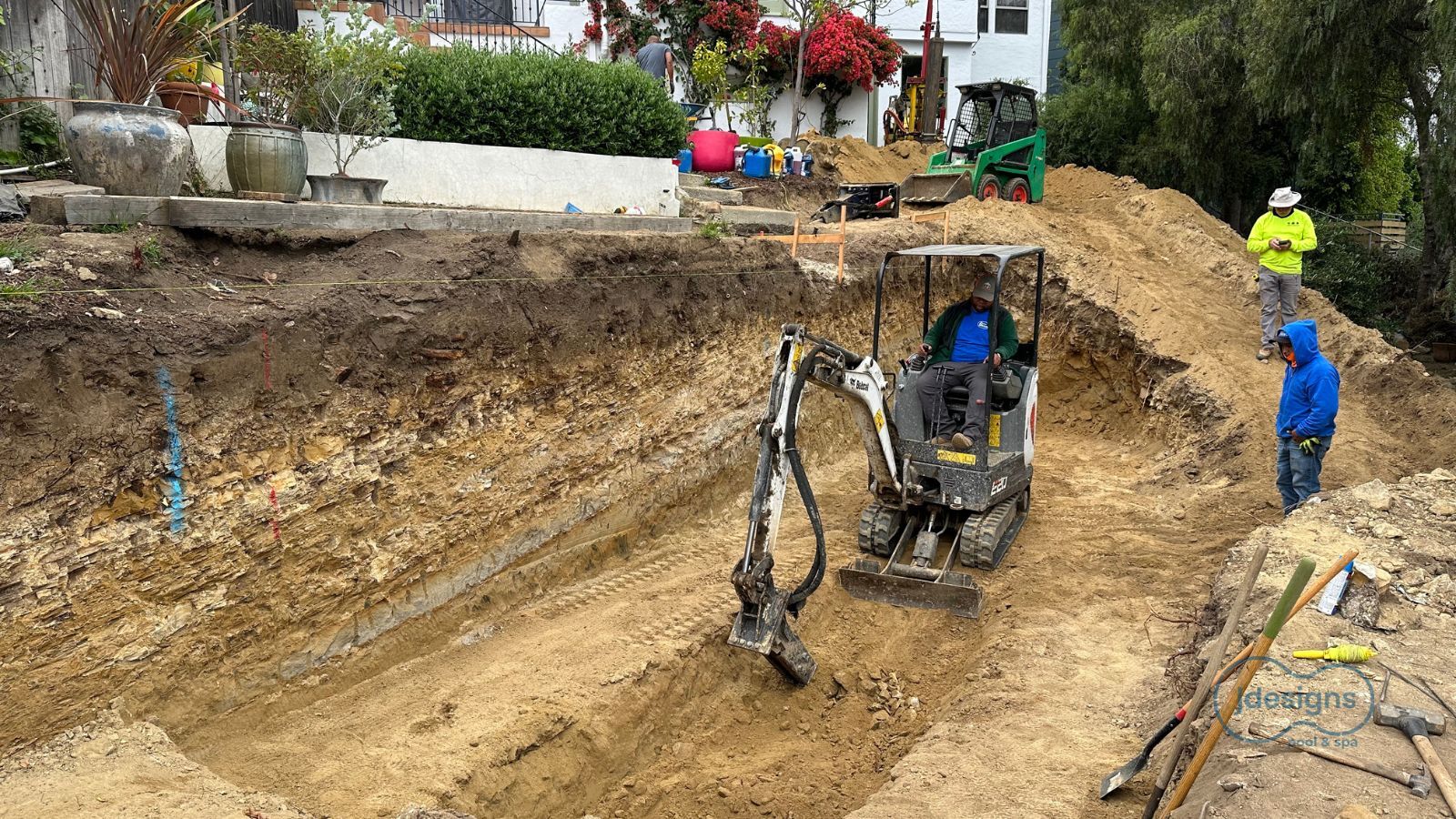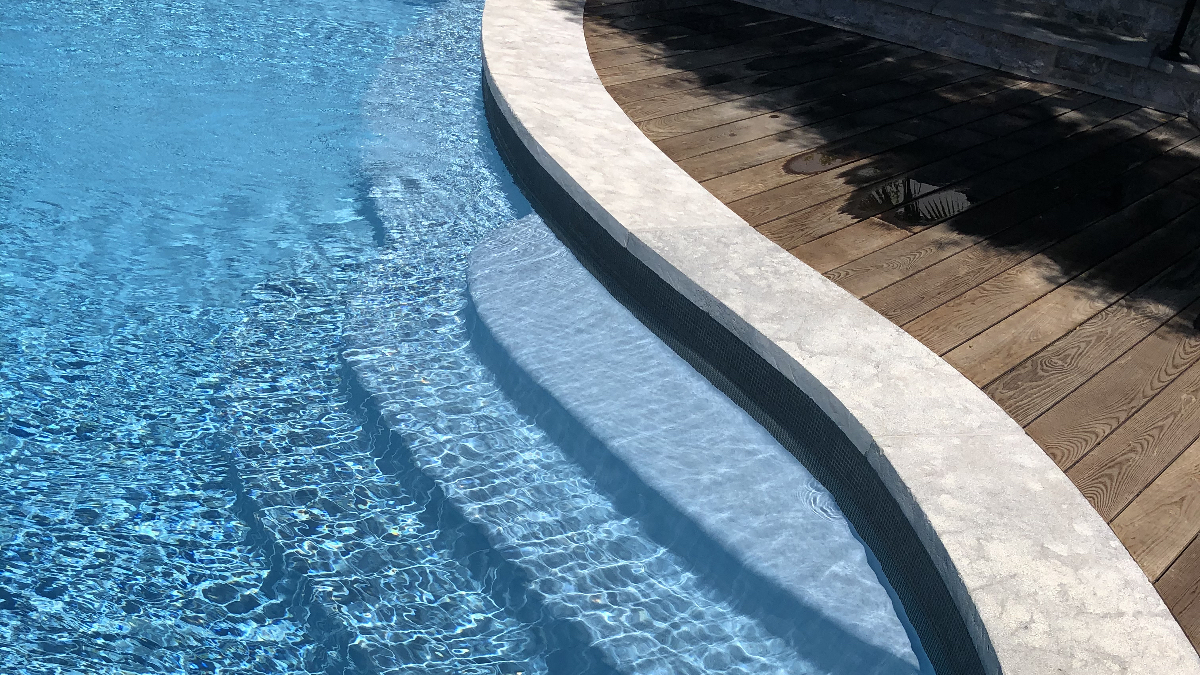Do You Need a Soils Report Before Pool Construction in LA?
The Hidden Soil Risks That Can Destroy Your Pool and Budget Why a Proper Soils Exploration Is Critical Before Building a Pool: A homeowner’s guide to...

Unlock the secrets to designing an efficient and safe swimming pool plumbing system with this comprehensive guide.
.jpg?width=407&height=229&name=Plumbing%20Blog%20Featured%20Image%20(3).jpg)
Understanding pool plumbing begins with grasping the foundational principles that govern the flow of water in and out of your aquatic sanctuary. Essential components, such as pumps, filters, heaters, and sanitation systems, must be synergistically connected through a well-designed network of piping. This complexity underscores the imperative of sophisticated planning to ensure that each element performs optimally, maintaining the delicate balance of a pristine pool environment.
Moreover, the blueprint of your pool's plumbing is more than just a schematic of pipes and fittings; it is a testament to thoughtful engineering that prioritizes efficiency, longevity, and ease of maintenance. As you delve into these basics, you adopt a philosophy that combines authenticity with functionality—a hallmark of any well-designed swimming pool.

The heart of a swimming pool's circulatory system lies in precisely calibrating the pipe diameter and water flow. To achieve a harmonious flow that conserves energy and extends the pump's life in your pool, meticulous calculations are used. These calculations take into account the pool's volume, the pump's capacity, and the resistance created by the length and bends of the piping. Trustworthy professionals use this data to develop strategies that optimize water turnover rates, ensuring every drop of water is filtered and sanitized effectively. This translates to energy savings.
The outcome of such precision is not only a pool that sparkles with clarity but also one that operates with an undercurrent of efficiency. This holistic approach to pipe sizing and water flow is a testament to our commitment to creating systems that serve our clients' needs while upholding the highest standards of industry practice.
Pro Tip: A one-size-fits-all approach does NOT apply to a pool's circulation system.

Navigating the regulatory landscape of swimming pool construction is critical for ensuring the safety and compliance of your aquatic retreat. Adhering to local and national codes is not just a legal formality—it is a moral imperative to protect those who will enjoy the refreshing embrace of your pool. From specifying the maximum water velocity to prevent discomfort and injuries to implementing anti-entrapment devices in compliance with the Virginia Graeme Baker Pool & Spa Safety Act, which is an anti-drowning and anti-entrapment law. Every regulation serves as a pillar in the fortress of safety we are committed to building.
A professional and informative approach to understanding and applying these regulations is indispensable in this respect. Our unwavering dedication to this aspect of the design process reflects our respect for the trust you place in us to deliver a pool that is beautiful and embodies the highest standards of safety.
.jpg?width=236&height=315&name=Plumbing%20Vertical%20Blog%20Visual%20(1).jpg)
The sanctity of your swimming pool is preserved through rigorous safety measures that guard against injuries and blockages. By opting for larger diameter pipes, we actively reduce water velocity, which in turn diminishes the risk of accidents. Equally important is the installation of certified drain covers, designed to prevent tragic entrapment occurrences and create a secure swimming environment for all ages.
These precautions are taken with utmost respect for the well-being of our clients, ensuring that each swim is a tranquil sojourn free from concerns of hidden dangers. It is through these meticulous safety implementations that we express our commitment to creating pools that are not merely structures of leisure but bastions of safety.
.jpg?width=281&height=375&name=Pump%20Vertical%20Blog%20Visual%20(1).jpg)
Gallons per minute or GPM, is the (Imperial) and universal measurement for pool equipment and circulation. All manufacturers outline requirements for their equipment to meet regulatory and safety standards. This provides the framework for the volume of water and the rate at which we can circulate the pool's water, enabling effective filtering and sanitization simultaneously. Following these guidelines guarantees the equipment operates with maximum efficiency, consuming minimal energy and ensuring optimal water quality cir
When these specifications are not followed, the pool water is likely to be cloudy, the motor will be loud, and the filtration will be poor. Besides the GPM the pump curve a graphic interpretation of the pump performance provided by the manufacturer. Following these specifications ensures you pick the right pump for the job.
Pro Tip: Following the pump curve is also based on the pipe diameter.
.jpg?width=575&height=431&name=Plumbing%20Horizontal%20Blog%20Visual%20(1).jpg)
Choosing the right team of professionals to turn your pool's plumbing design from blueprint into reality is a decision of great importance. It requires collaboration with experts who not only have a firm grasp of the technical aspects but also show a genuine commitment to your project's success. With a sharp eye for detail and a commitment to excellence, these professionals ensure that each installation meets the stringent demands of both the client and the applicable safety standards.
We’ve put together a full breakdown of pool circulation design in our Pool Plumbing Sizing & Circulation blog.
It covers more advanced topics like return jet positioning, head loss, and manifold setups — perfect if you're planning a more complex design.
Designing your pool’s plumbing system with care — from flow rate to fittings — is one of the smartest things you can do to avoid long-term headaches.
A poor plumbing plan doesn’t just lead to cloudy water — it can cause pump burnout, unsafe swimming conditions, and constant repairs.
At J Designs, we specialize in building high-performance, code-compliant pool systems that prioritize comfort, safety, and long-term value. Whether you’re in early planning or ready to break ground, we’re here to make sure your plumbing is as flawless as your final splash.

The Hidden Soil Risks That Can Destroy Your Pool and Budget Why a Proper Soils Exploration Is Critical Before Building a Pool: A homeowner’s guide to...

Why Pool Coping Fails - How to Avoid Expensive Repairs If you’re planning a new pool or renovating an older one, it’s completely normal to feel...

Have you ever wondered why your pool company talks about “certified technicians”? Or why does Los Angeles County require strict training and testing...